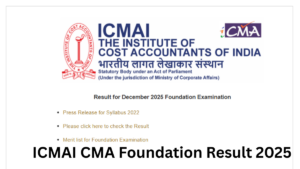Class 11 Biology NCERT Solutions: Adda 247 provides NCERT Solutions for Class 11 chapter 17 Biology which is for the students who want to go ahead in life and achieve great marks in their examinations. The NCERT Solutions for class 11 are provided by the teachers who are experts of their subjects. The solutions are set according to the rules formulated by the NCERT class 11 biology and in the language that can be understood by every student. By these reading the solutions students can build up a strong base easily. The NCERT class 11 Biology solutions covers the chapters 1 to 22 with the important questions and the answers in a detailed way.
Examinations can be threatening for some people, a proper learning of the concepts is the key to crack the examination. Students rely on the solutions of the NCERT provided by Adda 247. The solutions are formulated by the experts of the subjects who have tremendous knowledge in their subjects.
These NCERT Solutions of class 11 help the students to get familiarized with the textbooks. The students can access the solutions anywhere while browsing the web easily. The solutions are very precise and accurate.
NCERT Solutions for Class 11 Biology Chapter 17 – Breathing and exchange of gases
The chapter provides information about Breathing and exchange of skin. Cells continuously use oxygen (O2) for the catabolic reactions that releases energy from molecules, e.g., breakdown of nutrient molecules like glucose. Thus, O2 has to be provided to the cells constantly. Simultaneously, these reactions releases carbon dioxide (CO2), which is harmful, so it must be removed quickly and efficiently.
The process that helps in the exchange of O2 from the atmosphere with CO2 produced by the cells is called breathing, commonly known as respiration.
[sso_enhancement_lead_form_manual title=”Download Full PDF of Class 11 Biology Chapter 17 ” button =”Download Now” pdf =”/jobs/wp-content/uploads/2021/06/24165127/English-chapter-17.pdf”]
Features of the NCERT Solutions for Class 11 Biology Chapter 17 – Breathing and exchange of gases
NCERT Solutions of class 11 have been answered based on the important information on the question.
- The columns are used wherever necessary.
- Solutions are solved point wise and accurately answered point to point.
Important Question of NCERT Solutions for Class 11 Biology Chapter 17
Question 1. Define vital capacity. What is its significance?
Answer: Vital capacity: The is the maximum volume of air that a person can exhale out after a maximum inspiration is called Vital Capacity. It is about 3.5 – 4.5 litres in a normal adult person.
Significance of Vital Capacity: It allows the intake of maximum amount of fresh air and to get rid of the foul air in a single stroke of respiration. Hence, it increases the gaseous exchange between the various tissues of the body, thereby increases the amount of energy available to the body.
Question 2. State the volume of air remaining in the lungs after a normal breathing.
Answer: The volume of air remaining in the lungs after a normal expiration is known as functional residual capacity (FRC). It includes expiratory reserve volume (ERV) and residual volume (RV). ERV is the maximum volume of air that can be exhaled after a normal expiration. It is about 1000 mL to 1500 mL. RV is the volume of air remaining in the lungs after maximum expiration. It is about 1100 mL to 1500 mL.
∴ FRC = ERV + RV
≅ 1500 + 1500
≅ 3000 mL
The functional residual capacity of the human lungs is about 2500 – 3000 mL.
Question 3. Diffusion of gases occurs in the alveolar region only and not in the other parts of respiratory system. Why?
Answer: Each alveolus is made up of highly-permeable and thin layers of squamous epithelial cells. Similarly, the blood capillaries have layers of squamous epithelial cells. Oxygen-rich air enters the body through the nose and reaches the alveoli. The deoxygenated (carbon dioxide-rich) blood from the body is brought to the heart by the veins. The heart pumps it to the lungs for oxygenation. The exchange of O2 and CO2 takes place between the blood capillaries surrounding the alveoli and the gases present in the alveoli.
Thus, the alveoli are the sites for gaseous exchange. The exchange of gases takes place by simple diffusion because of pressure or concentration differences. The barrier between the alveoli and the capillaries is thin and the diffusion of gases takes place from higher partial pressure to lower partial pressure. The venous blood that reaches the alveoli has lower partial pressure of O2 and higher partial
pressure of CO2 as compared to alveolar air. Hence, oxygen diffuses into blood. Simultaneously, carbon dioxide diffuses out of blood and into the alveoli.
Question 4. What are the major transport mechanisms for CO2? Explain.
Answer: The transport mechanism of takes place mainly by the haemoglobin. The carbon dioxide dissolved in the blood combines with the haemoglobin to form carbamino-haemoglobin (about 20-25 per cent), which is carried to the alveoli from the tissue. This binding is related to the partial pressure of . Partial pressure of is a major factor, which could affect this binding. When p is high and pO2 is low as in the tissues, more binding of carbon dioxide occurs whereas, when the p is low and p is high as in the alveoli, dissociation of from carbamino-haemoglobin takes place. During the dissociation of carbamino-haemoglobin the bound to haemoglobin from the tissues is delivered at the alveoli. RBCs contain a very high concentration of the enzyme, carbonic anhydrase and minute quantities of the same is present in the plasma too. This enzyme facilitates the following reaction in both directions. + → + H+ In the above reaction combines with H2O in the presence of carbonic anhydrase to form this is further split into to – +H+ . At the alveolar site where p is low, the reaction proceeds in the opposite direction leading to the formation of and. Thus, trapped as bicarbonate at the tissue level and transported to the alveoli is released out as By these methods every 100 ml of blood transports about 4ml of carbon dioxide to the alveoli to be exhaled.
Question 5. What will be the pO2 and pCO2 in the atmospheric air compared to those in the alveolar air?
(i) pO2 lesser, pCO2 higher
(ii) pO2 higher, pCO2 lesser
(iii) pO2 higher, pCO2 higher
(iv) pO2 lesser, pCO2 lesser
Answer: (ii) The p (partial pressure of oxygen) will be higher in the atmospheric air compared to that in the alveolar air. The pC (partial pressure of carbon dioxide) will be lesser in the atmospheric air compared to that in the alveolar air. In atmospheric air, p is about 159 mm Hg. In alveolar air, it is about 104 mm Hg. In atmospheric air, p is about 0.3 mm Hg. In alveolar air, it is about 40 mm Hg.
Question 6. Explain the process of inspiration under normal conditions.
Answer: Inspiration is the process of breathing in air from outside the body into the lungs. It is carried out by creating a air pressure gradient between the lungs and the atmosphere. When air enters the lungs, the diaphragm contracts toward the abdominal cavity, thereby increasing the space in the thoracic cavity for accommodating the inhaled air. Simultaneously. the volume of the thoracic chamber in the anteroposterior axis increases with the contraction of the external intercostal muscles. This causes the ribs and the sternum to move out, thereby increasing the volume of the thoracic chamber in the dorsoventral axis.
Thus, the overall increase in the thoracic volume leads to a similar increase in the pulmonary volume. Due to this increase, the intra-pulmonary pressure becomes lesser than the atmospheric pressure, and hence leads to the movement of air from outside the body into the lungs.
Question 7. How is respiration regulated?
Answer: A specialised centre present in the medulla region of the brain called respiratory rhythm centre is primarily responsible for the regulation of respiration. Another centre present in the pons region of the brain called pneumotaxic centre can moderate the functions of the respiratory rhythm centre. Neural signal from this centre can reduce the duration of inspiration and thereby, alter the respiratory rate.
Question 8. What is the effect of pCO2 on oxygen transport?
Answer: Partial pressure of (pC) can interfere the binding of oxygen with haemoglobin, i.e., to form oxyhaemoglobin. (i) In the alveoli, where there is high p and low p, less H+ concentration and low temperature., more formation of oxyhaemoglobin occur. (ii) In the tissues, where low p, high p, high H+ concentration and high temperature exist, the conditions are responsible for dissociation of oxygen from the oxyhaemoglobin.
Question 9. What happens to the respiratory process in a man going up a hill?
Answer: As the altitude increases, the oxygen level in the atmosphere decreases. Therefore, as a man goes uphill, he will suffer from oxygen deficiency. The causes the amount of oxygen in the blood to decline. The respiratory rate increases to compensate for the decrease in the oxygen level of the blood. Simultaneously, the rate of heart beat increases to increase the supply of oxygen to blood.
Question 10. What is the site of gaseous exchange in an insect?
Answer: Gaseous exchange in insects occurs through a system of air-filled internal tubes, the tracheal system, the finer branches of which extend to all parts of the body and may become functionally intracellular in muscle fibers. Thus oxygen is carried in the gas phase directly to its sites of utilization. While the blood is not concerned with oxygen transport in most insects, some insects have now been shown to have hemocyanin, an oxygen-carrying pigment, in the blood. In terrestrial insects and some aquatic species, the tracheae open to the outside through segmental pores, the spiracles, which generally have some filter structures and a closing mechanism reducing water loss from the respiratory surfaces. Other aquatic species have no functional spiracles, and gaseous exchange with the water involves arrays of tracheae close beneath the surface of thin, permeable cuticle.
Frequently Asked Questions on NCERT Solutions for Class 11 Biology Chapter 17
What are the advantages of referring NCERT Solutions for class 11 Biology chapter 17?
Students referring the NCERT Solutions of class 11 by Adda 247 find the solutions helpful during the exams. The solutions are prepared by the experts in an interactive manner keeping in mind the students. The students’ perspective is kept in mind while preparing the solutions. It helps in completing the syllabus on time and also provides notes for the revision prior to the exam.
What are the advantages of referring NCERT in competitive exams like JEE and AIPMT?
Most of the competitive exams like NEET, JEE etc. follow the baic NCERT books for designing their question papers. NCERT serves as the base for every book prepared for NEET and JEE. The competitive exams are based on the CBSE syllabus applied in XI and XII classes and NCERT books strictly follow CBSE syllabus. In addition to this, NCERT books play an important role in clearing out the theoretical concepts. Every topic given in NCERT books is explained in such a way to help students make their basics and fundamentals strong and clear.
How to read NCERT books more efficiently?
Given below are the important points which must be followed while reading the NCERT books in an efficient manner:
Go through each topic thoroughly by understanding the meaning and significance of each line mentioned in that particular topic.
Ask your teacher if any doubts.
Note down the important topics to revise at the time of examination.
Solve all the exercise questions given at the end of each chapter. These questions are important for understanding the concepts in a better way.
Is it mandatory to solve all the NCERT questions mentioned at the end of each chapter?
The questions and answers mentioned in NCERT textbooks at the end of each chapter are quite important not only for examination but also for understanding the concepts in a better way. These questions aim to test the students’ understanding and learning over the topics that they have learned in the chapter.
Solving the NCERT exercise problems will help to
- clear all the concepts and formulae you learned in a chapter
- get comfortable with different types of questions that might be asked in exams
- get enough practice which is key to succeed in Mathematics exam
- improve your accuracy and speed
What are the important concepts covered in the Chapter 17 of NCERT Solutions for Class 11 Biology?
The concepts involved in the chapter 9 of NCERT Solutions are –
17.1 – Respiratory Organs
17.2 – Mechanism of Breathing
17.3 – Exchange of Gases
17.4 – Transport of Gases
17.5 – Regulation of Respiration
17.6 – Disorders of Respiratory System
These concepts are created by the faculty at Adda 247. The solutions are available at Adda 247 in the PDF format which can be downloaded by the students.









 SNAP Result 2025 Out at www.snaptest.org...
SNAP Result 2025 Out at www.snaptest.org...
 ICMAI CMA Foundation Result 2025 Out, Do...
ICMAI CMA Foundation Result 2025 Out, Do...
 NEET UG 2026 Registration: NTA releases ...
NEET UG 2026 Registration: NTA releases ...














